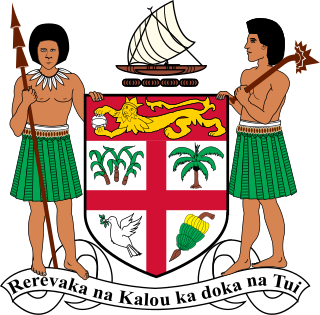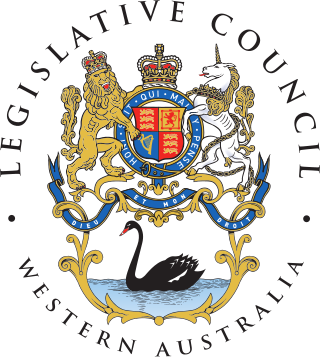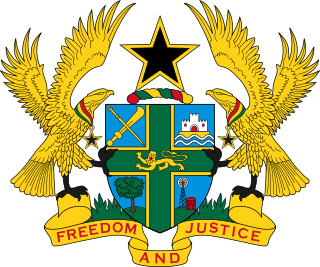
The Gold Coast was a British Crown colony on the Gulf of Guinea in West Africa from 1821 until its independence in 1957 as Ghana. The term Gold Coast is also often used to describe all of the four separate jurisdictions that were under the administration of the Governor of the Gold Coast. These were the Gold Coast itself, Ashanti, the Northern Territories protectorate and the British Togoland trust territory.

The Constitution of the Republic of China is the fifth and current constitution of the Republic of China (ROC), ratified by the Kuomintang during the Constituent National Assembly session on 25 December 1946, in Nanking, and adopted on 25 December 1947. The constitution, along with its Additional Articles, remains effective in ROC-controlled territories.

The provinces of the Colony of New Zealand existed as a form of sub-national government. Initially established in 1846 when New Zealand was a Crown colony without responsible government, two provinces were first created. Each province had its own legislative council and governor. With the passing of the New Zealand Constitution Act 1852 the provinces were recreated around the six planned settlements or "colonies". By 1873 the number of provinces had increased to nine, but they had become less isolated from each other and demands for centralised government arose. In 1875 the New Zealand Parliament decided to abolish the provincial governments, and they came to an end in November 1876. They were superseded by counties, which were later replaced by territorial authorities.

The Great Council of Chiefs is a Fijian constitutional body. It previously existed from 1876 to March 2012 and was restored in May 2023.
The constitutional history of Canada begins with the 1763 Treaty of Paris, in which France ceded most of New France to Great Britain. Canada was the colony along the St Lawrence River, part of present-day Ontario and Quebec. Its government underwent many structural changes over the following century. In 1867 Canada became the name of the new federal Dominion extending ultimately from the Atlantic to the Pacific and the Arctic coasts. Canada obtained legislative autonomy from the United Kingdom in 1931, and had its constitution patriated in 1982. Canada's constitution includes the amalgam of constitutional law spanning this history.

The Western Australian Legislative Council is the upper house of the Parliament of Western Australia, a state of Australia. It is regarded as a house of review for legislation passed by the Legislative Assembly, the lower house. The two Houses of Parliament sit in Parliament House in the state capital, Perth.
The Senate was the upper house of the Parliament of South Africa between 1910 and its abolition from 1 January 1981, and between 1994 and 1997.

The New Zealand Constitution Act 1852 was an Act of the Parliament of the United Kingdom that granted self-government to the Colony of New Zealand. It was the second such Act, the previous 1846 Act not having been fully implemented. The purpose of the Act was to have constitutional independence from Britain. The definition of franchise or the ability to vote excluded all women, most Māori, all non-British people and those with convictions for serious offences.

Tamil Nadu Legislative Council was the upper house of the former bicameral legislature of the Indian state of Tamil Nadu. It began its existence as Madras Legislative Council, the first provincial legislature for Madras Presidency. It was initially created as an advisory body in 1861, by the British colonial government. It was established by the Indian Councils Act 1861, enacted in the British parliament in the aftermath of the Indian Rebellion of 1857. Its role and strength were later expanded by the second Council Act of 1892. Limited election was introduced in 1909. The Council became a unicameral legislative body in 1921 and eventually the upper chamber of a bicameral legislature in 1937. After India became independent in 1947, it continued to be the upper chamber of the legislature of Madras State, one of the successor states to the Madras Presidency. It was renamed as the Tamil Nadu Legislative Council when the state was renamed as Tamil Nadu in 1969. The Council was abolished by the M. G. Ramachandran administration on 1 November 1986. In 1989, 1996 and 2010, the DMK regime headed by M. Karunanidhi tried to revive the Council. The former AIADMK regime (2016-2021) expressed its intention not to revive the council and passed a resolution in the Tamil Nadu Legislative Assembly in this regard.

The 1st Legislative Yuan election was held in China between 21 and 23 January 1948. This election, and the preceding 1947 National Assembly election are the first elections of under the newly ratified 1947 Constitution of the Republic of China. Under this constitution, the Legislative Yuan is a standing legislature when the National Assembly is not in session. At the time most of Chinese territory was under the control of the government of the Republic of China, using a direct voting system elected 759 Legislative Representatives. Using the Republic's then 461 million population to calculate, on average 600,000 people elected one representative in the Legislative Yuan. The election along with the one held for the National Assembly also made China the largest democracy at the time.

The New Zealand Constitution Act 1846 was an Act of the Parliament of the United Kingdom that was intended to grant self-government to the Colony of New Zealand, but was never fully implemented. The Act's long title was "An Act to make further Provision for the Government of the New Zealand Islands". It received royal assent on 28 August 1846.

General elections were held in Gold Coast on 8 February 1951. Although elections had been held for the Legislative Council since 1925, the Council did not have complete control over the legislation, and the voting franchise was limited to residents of urban areas meeting property requirements and the councils of chiefs.
The Constitution of 1962 was the fundamental law of Republic of Pakistan from 8 June 1962 until martial law was declared in 25 March 1969. It was abrogated on 25 March 1969 by President Yahya Khan.

The first Māori elections were held in 1868 in four newly formed Māori electorates during the term of 4th Parliament.
The provincial councils were the legislatures of the four original provinces of South Africa. They were created at the foundation of the Union of South Africa in 1910, and abolished in 1986 when they were replaced by a strengthened executive appointed by the State President. The four provincial councils were the Cape Provincial Council, the Natal Provincial Council, the Transvaal Provincial Council and the Orange Free State Provincial Council.

The Coloured vote constitutional crisis, also known as the Coloured vote case, was a constitutional crisis that occurred in the Union of South Africa during the 1950s as the result of an attempt by the Nationalist government to remove coloured voters in the Union's Cape Province from the common voters' rolls. It developed into a dispute between the judiciary and the other branches of government over the power of Parliament to amend an entrenched clause in the South Africa Act and the power of the Appellate Division to overturn the amendment as unconstitutional. The crisis ended when the government enlarged the Senate and altered its method of election, allowing the amendment to be successfully enacted.

General elections were held in Gold Coast in August 1927, the first direct elections in the territory.

General elections were held in Nigeria for the first time on 20 September 1923. The Nigerian National Democratic Party (NNDP) won three of the four elected seats in the Legislative Council.

General elections were held in Nigeria in 1947. The Nigerian National Democratic Party (NNDP) won three of the four elected seats in the Legislative Council.
The first New Zealand Legislative Council, also known as the General Legislative Council, was established in 1841 when New Zealand was created as a Crown colony separate from New South Wales. The Legislative Council consisted of the governor, the colonial secretary, the colonial treasurer, and senior justices of the peace; all members were appointed. From 1848, there were additional provincial Legislative Councils for New Ulster and New Munster. The general Legislative Council had twelve sessions, and the first ten were held in Auckland while the last two were held in Wellington. In May 1852, an act provided for two thirds of the membership of the provincial Legislative Councils to be elected. Elections for the New Ulster Province had already been held when news was received that the New Zealand Constitution Act 1852 had been passed by the Parliament of the United Kingdom. No meeting of the elected members was ever called. The New Zealand Constitution Act 1852 disestablished the Legislative Council when writs for the first election of members of the New Zealand House of Representatives were returned. The original Legislative Councils ceased to exist in September 1853.













